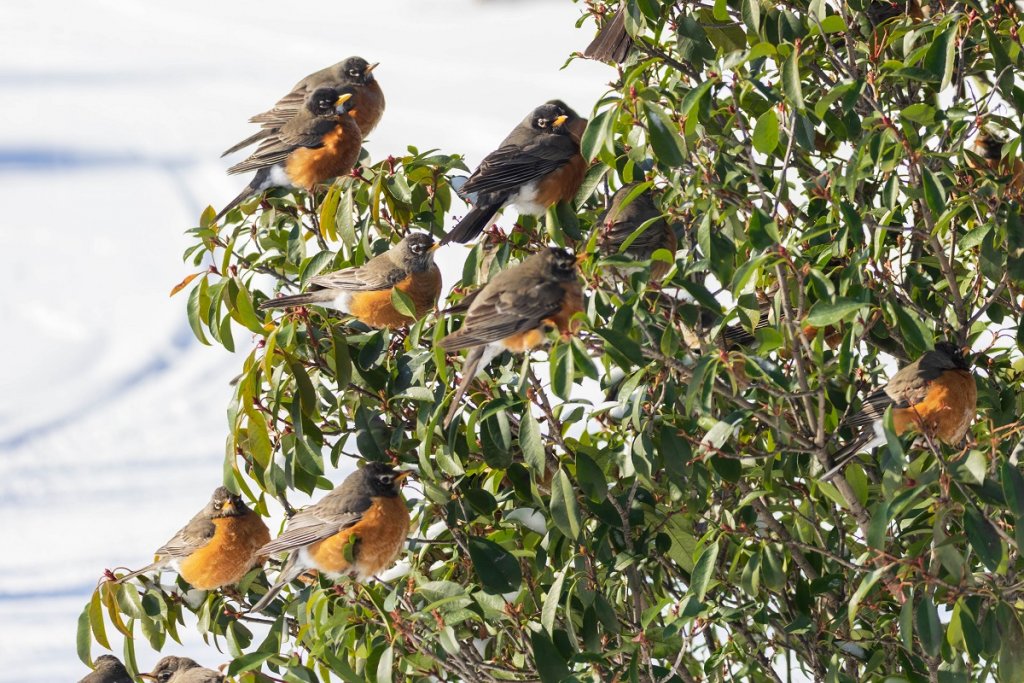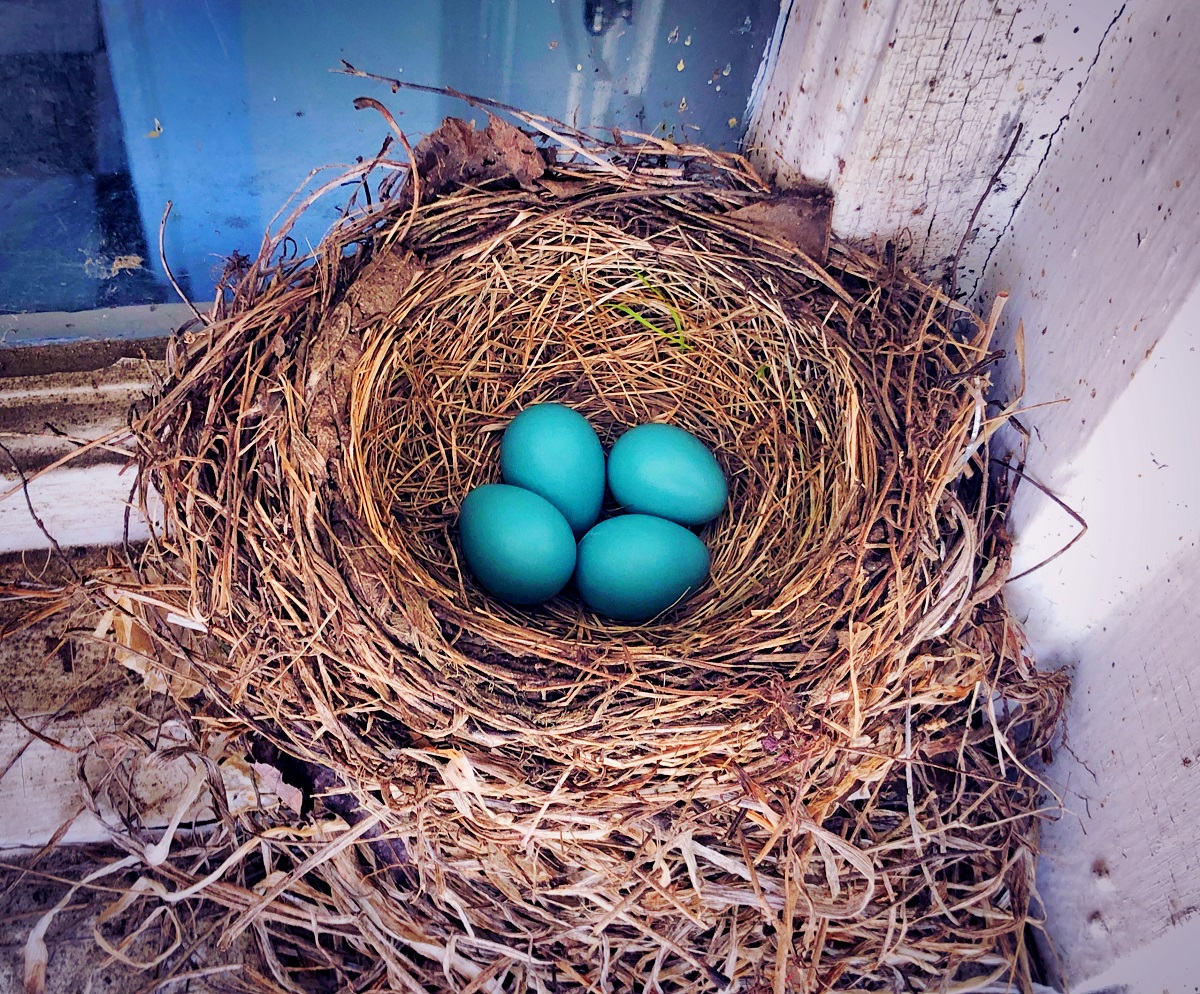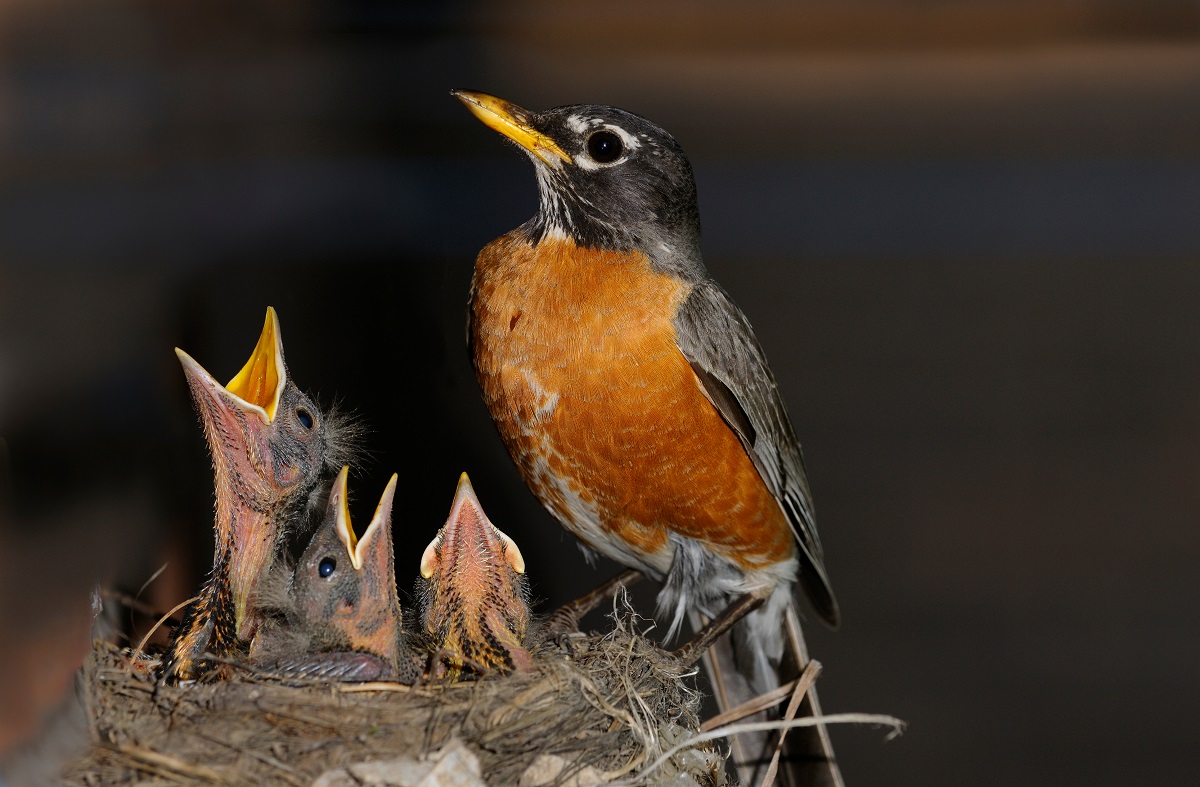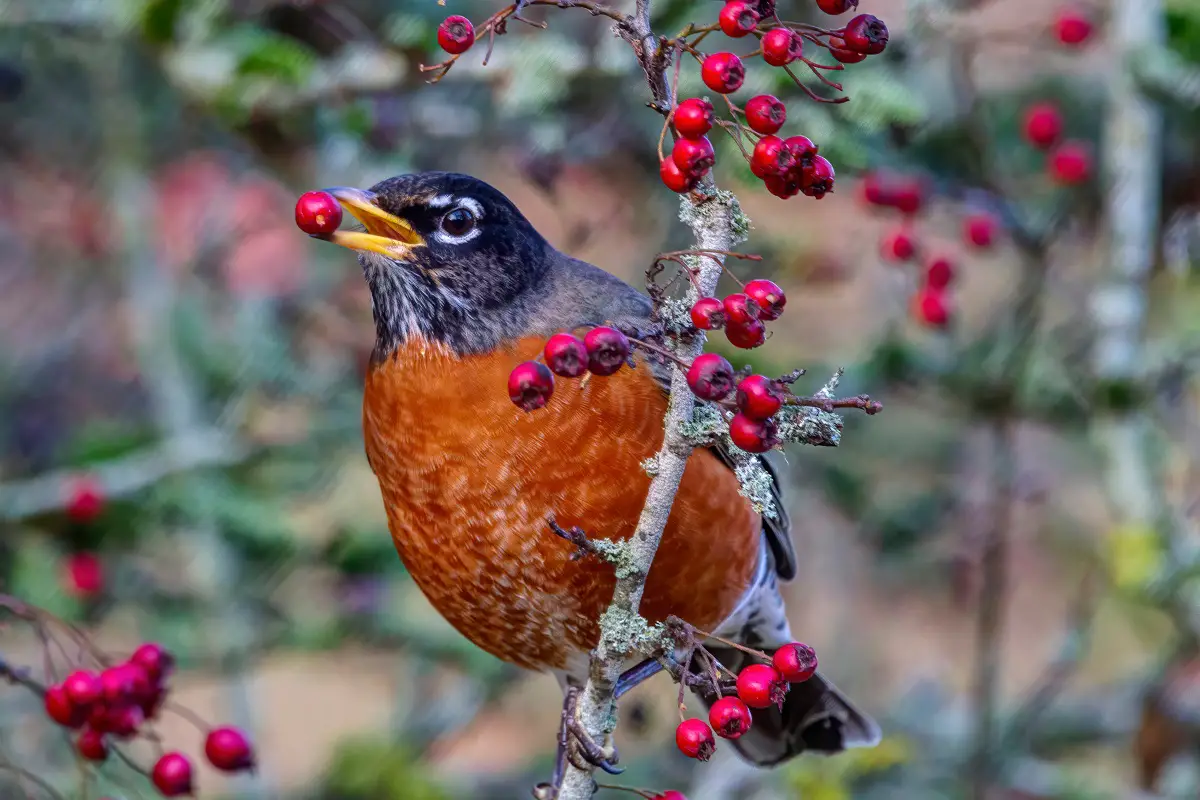The American robin is the most plentiful songbird in North America, as it numbers over 370,000,000 across its seven species. Known for its cheeery song that starts at dawn, the robin is native to all regions of the US. It is commonly seen hopping along lawn in search of earthworms and other treats.
American Robins are friendly songbirds that are often considered as the harbingers of spring. If you hear their bird songs, spring can’t be far behind. They sing as early as the first light throughout the spring and summer and continue until the sun sets.
While they resemble the European robin, they are from a different family of birds. North America is home to 370 million native robins of the Turdus migratorius species, but there is only one reported sighting of a European robin from the Erithacus rubecula family.
Seven species of the American robin fly about the US, making them the most abundant songbird in North America.
What Does the American Robin Look Like? American Robins: Color and Type
American Robins are gray-brown birds that have orange or reddish underparts, darker heads, white outlines around the eyes, and yellow bills. They also have white spots under their belly and on the underparts of its tail are quite conspicuous when they are in flight.
These colorful birds are something mistaken for other birds which are not related. Red-Breasted Nuthatch, a bluish-gray bird with a black cap and rich rusty-cinnamon underparts is one bird thought to be a robin.
Other species often confused include Baltimore oriole, American redstart, flycatchers, spotted towhee, orchard oriole, varied thrush, black-headed grosbeak, and the red-winged blackbird.
In the video below, we rounded up 10 little known facts about Robins!
Other Physical Characteristics Of The Robin Bird
Robins are the biggest of the North American thrushes. They measure:
- Length: 7.9-11.0 in (20-28 cm)
- Weight: 2.7-3.0 oz (77-85 g)
- Wingspan: 12.2-15.8 in (31-40 cm)
Their bodies are rounded, and both their legs and tails are long.
Often, male and female robins look quite similar, but the male American robin has brightly colored feathers. Male robin birds are characteristically large-bodied and bellied. Females have larger heads and may appear larger than the male robin birds.
Their morning sound is often described as sounding like “Cheer up” They communicate with each other in mumbled tones that sound like “tuk” or “cuck” and or sound alarm calls of “yeep” or “peek” when in danger. At times, they seem like they are laughing or chuckling with “chirr” sounds.

Are Robins Migratory Birds?
Technically, American robins are migratory as they may winter away from the nest. However, they may not be too far away from where they have nested.
In the winter, those who don’t fly south may join a large flock to roost and forage for food. When people see their first robin in the spring, this is a sign that the flocks have broken up.
Types of Robins
Seven species of the American robin can be found in North America – five in the US and two mainly in Canada or Mexico.
The eastern robin (Turdus migratorius) is the dominant subspecies. It features a brown back with a reddish-orange breast that varies from a rich red maroon to peachy orange, brown legs and feet, and a yellow bill with a dark tip. Males may be more vibrant than females, but even experts have trouble sexing these birds.
- Breeds in the US and Canada
- Winters throughout the US, including the south coast of Alaska, southern Canada, the Bahamas, Bermuda, and eastern Mexico
The northwestern robin (Turdus migratorius caurinus) is smaller than the eastern robin. It has a darker head and just a small amount of white on its two tail feathers.
- Breeds in southeastern Alaska through coastal British Columbia to Washington and northwestern Oregon
- Winters from southwestern British Columbia south to central and southern California and east to northern Idaho
The western robin (Turdus migratorius propinquus) is similar in size to the eastern robin, but its feathers are paler and heavily tinged with brownish-gray. There is little white at the ends of its tail feathers. Males are darker than females and have pale or whitish heads, while females have little red on their breasts.
- Breeds from southeastern British Columbia, southern Alberta, and southwestern Saskatchewan south to southern California and northern Baja California
- Winters throughout much of the southern breeding range and south to Baja California
The Newfoundland robin (Turdus migratorius nigrideus) has a darker or blackish head, a dark gray back, and slightly redder underparts.
- Breeds from coastal northern Quebec to Labrador and Newfoundland
- Winters from southern Newfoundland south through most of the eastern US states to southern Louisiana, southern Mississippi, and northern Georgia
The San Lucas robin (Turdus migratorius confinis) is a small bird that is paler than most other variations. Its head, face, and upperparts are a uniform pale gray-brown, while its breast is a muted orange. The tail feathers have white edges but no white spots. The American Ornithologists’ Union regards it as only a subspecies. although some experts consider it a separate species.
- Breeds above 3,300 ft. in the highlands of southern Baja California
- Winters in the same area
The southern robin (Turdus migratorius achrusterus) is smaller than the eastern robin, with paler underparts and black-tipped feathers on the tail.
- Breeds from southern Oklahoma east to Maryland and western Virginia and south to northern Florida and the Gulf Coast states
- Winters through much of the southern part of the breeding range
The Mexican robin (Turdus migratorius phillipsi) is somewhat smaller than the western subspecies. The underparts of the male are rusty rather than brick-red like eastern robins.
- Resident in Mexico south to central Oaxaca
Where Do Robins Live?
Robins are common in cities, towns, lawns, farmland, and forests wherever there are trees for nesting and mud and materials for building.
In the winter, they gather in flocks in wooded areas or shrubs that offer a supply of berries. As they are ground feeders, they often run or hop on lawns in an upright stance as they procure food.
Robin nest sites are usually located 5’-25′ above ground. They may build a nest on a porch or windowsill as well as in trees. The finished product, mainly built by the females, is a cup of twigs, grasses, and debris cemented by mud and lined with plant fibers and fine grasses.
The American Robin Diet
Robins often enjoy eating berries, earthworms, and insects like grasshoppers and caterpillars. In the winter, when the supply of fresh insects dries up, they search out fruits and berries. Robins do not enjoy seed at bird feeding stations.


Breeding Habits
As spring approaches, the males seek out a location for the nest and may sing and fight to protect the territory. He then sings to court the females, who may consider several suitors before choosing a mate.
After mating, the female lays 3-7 blue eggs that hatch after 12-14 days. Both parents feed the young, although the female plays a more dominant role. After two weeks, the hatchlings are ready to leave the nest. The parents then prepare for a second and maybe a third brood of chicks in one mating season.
The female is likely to start building a new nest for each brood, where after mating, she will lay a new crop of eggs in a shade of robin egg blue.
How Many Robin Birds Are There?
By some estimates, American robins number 370 million individuals. They are not an endangered species. However, as robins have many predators, only 25% of baby robins make it past a year; if they do, robins survive an average of 5-7 years in the wild and up to 17 years in captivity.
Their enemies include squirrels, snakes, crows, owls, hawks, blue jays, raccoons, and cats. When they feast on lawns, they can be poisoned with chemicals. Many robin deaths occur when they fly into communications towers or glass. Their numbers may also be impacted by climate change. although they are increasing rather than diminishing in numbers.
The birds are the state bird of Connecticut and Michigan. It held that title in Wisconsin until it was replaced by the mourning dove in Wisconsin in 1971.
Interesting Robin Facts
Robins are a popular species of birds that are known to be melodious dawn singers with their cheer-up chirp. According to legend, they represent hope, renewal, and rebirth.
Legend also has it that the birds are a good source of fortune and renewal and are believed to be spiritual messengers who bring messages from dead loved ones.
Robins are very friendly, even around humans. They may get within a couple feet of humans and even eat out of their hands.
Scientific research carried out by scientists at Victoria University’s School of Biological Science finds that robins birds can know and recognize different people. That is why they are attracted to living around people.
Even though they are a joy to have around, robins are carriers of West Nile Virus, which can be spread to humans. They survive it longer than other birds like bluejays and crows, so are more of a threat to humans when they are infected.

